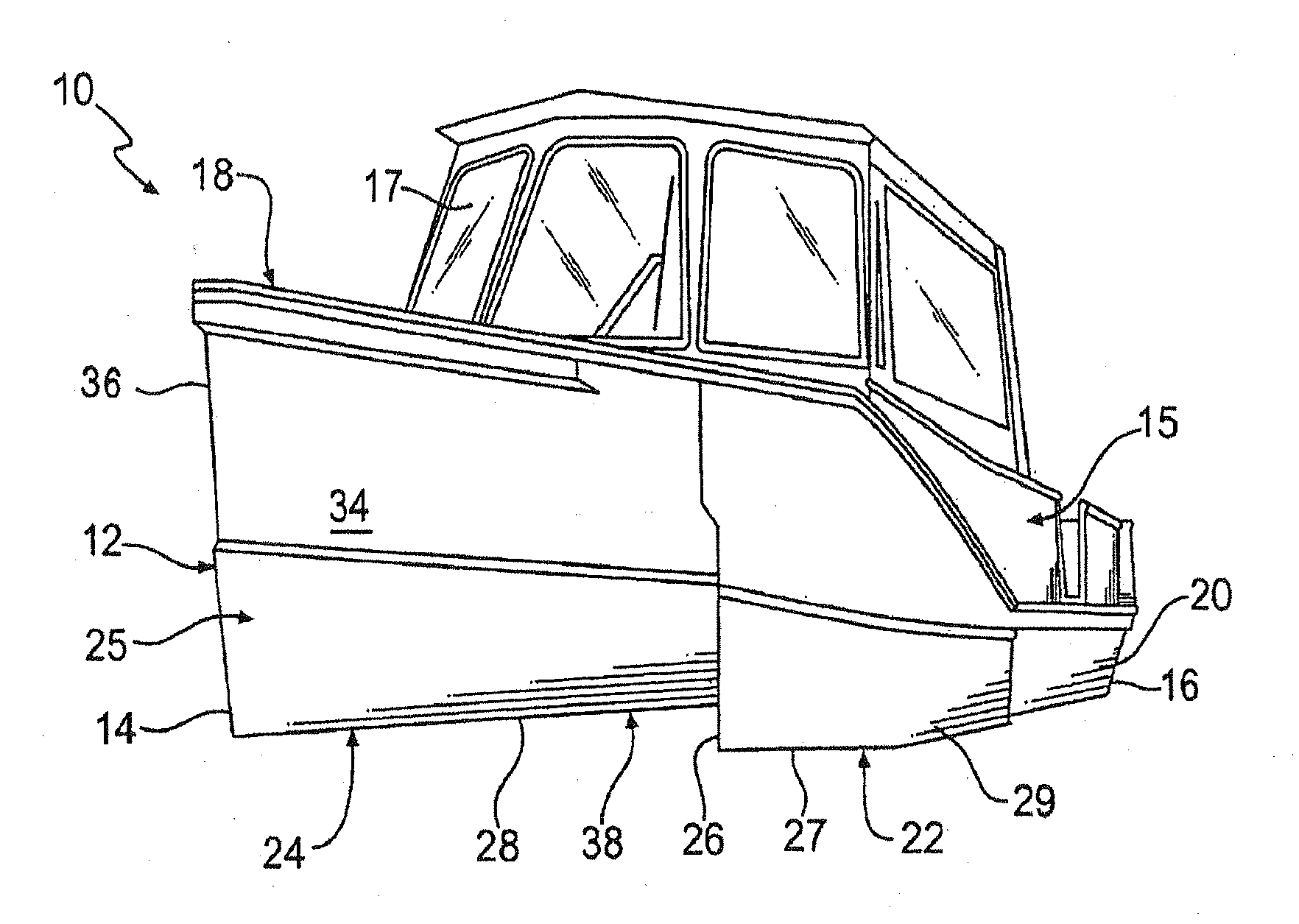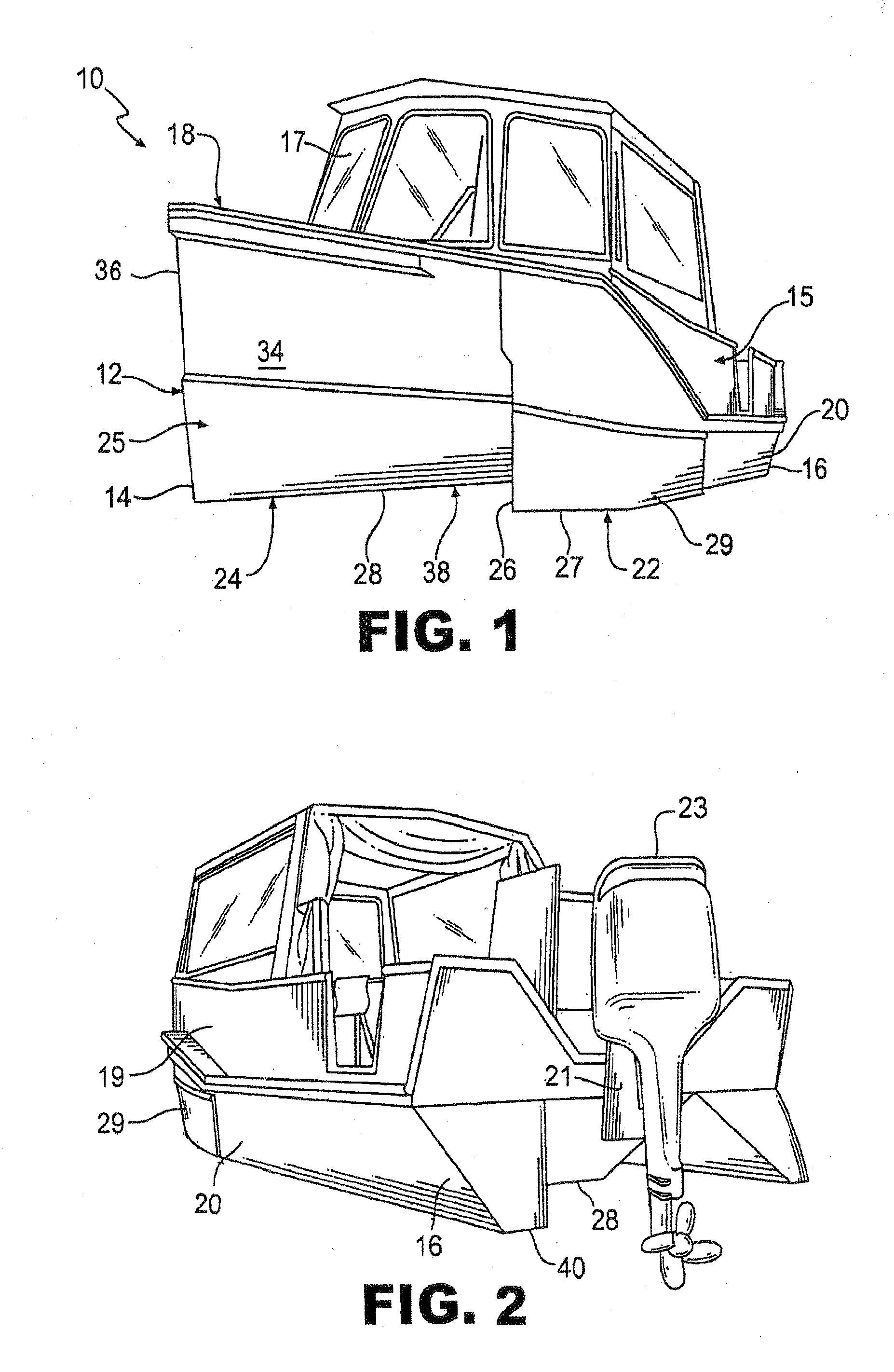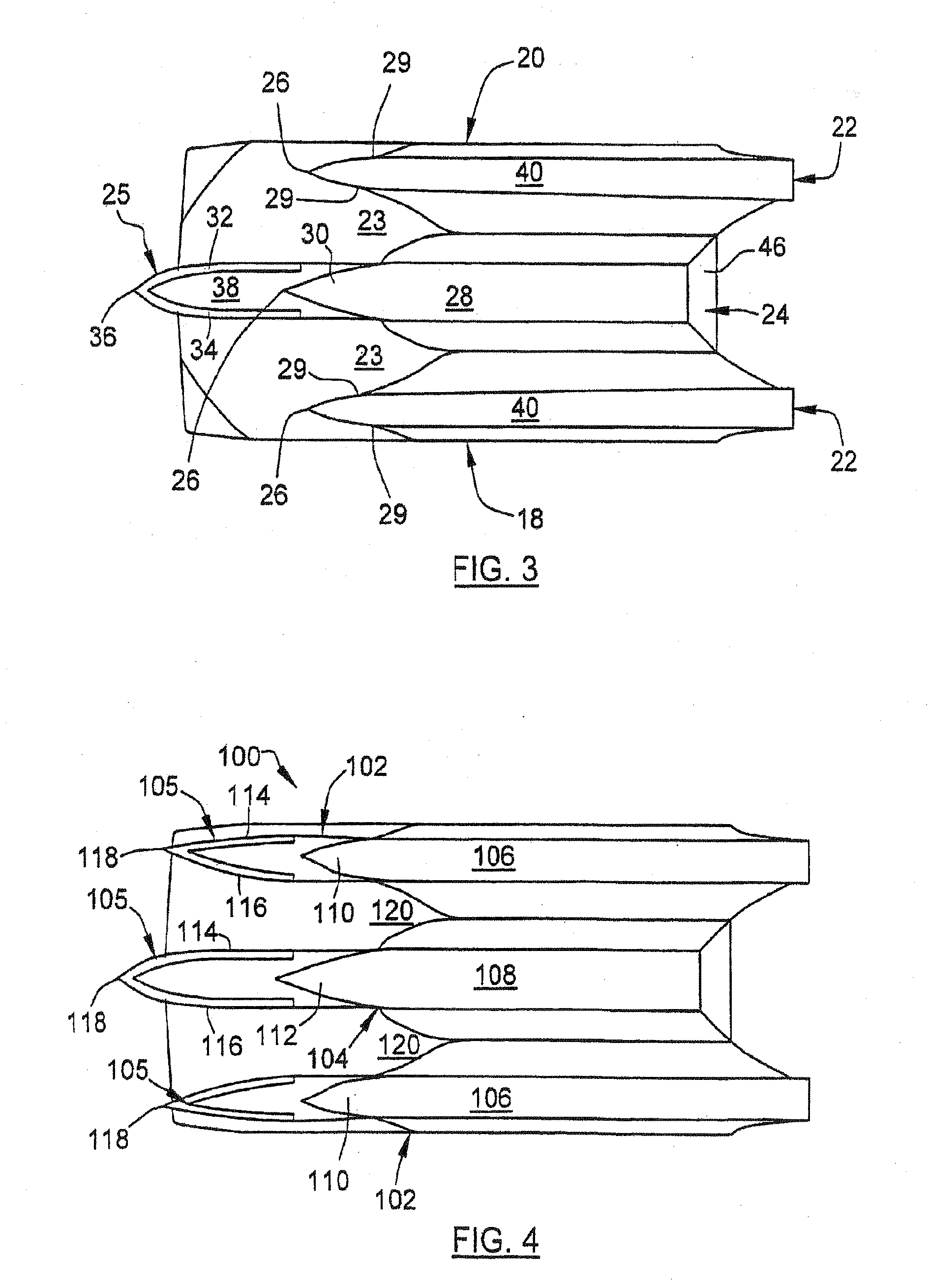Watercraft with wave deflecting hull
- Summary
- Abstract
- Description
- Claims
- Application Information
AI Technical Summary
Benefits of technology
Problems solved by technology
Method used
Image
Examples
Embodiment Construction
[0029]Reference will now be made in detail to an embodiment of the invention as illustrated in the accompanying drawings.
[0030]Turning to FIGS. 1-2, an embodiment of a watercraft, generally identified by reference number 10, is illustrated. The watercraft 10 comprises a hull 12 having a bow 14, stern, 16, port side 18, and starboard side 20. The watercraft 10 may be built out of aluminum with a formed hull or sheets with welded seams. The hull 12 and other portions of watercraft 10 could also be fabricated from other materials such as, for example, FRP, high-density polyethylene, other metals, or other suitable materials.
[0031]As illustrated in FIGS. 1 and 2, and with reference to the schematic of the hull configuration in FIG. 3, the watercraft 10 comprises a hull 12 which is designed to cut through waves or wakes of other boats, and minimize the forces acting on the hull to reduce the pounding experienced with typical hull designs. The hull 12 further reduces lateral action on the...
PUM
 Login to View More
Login to View More Abstract
Description
Claims
Application Information
 Login to View More
Login to View More - R&D
- Intellectual Property
- Life Sciences
- Materials
- Tech Scout
- Unparalleled Data Quality
- Higher Quality Content
- 60% Fewer Hallucinations
Browse by: Latest US Patents, China's latest patents, Technical Efficacy Thesaurus, Application Domain, Technology Topic, Popular Technical Reports.
© 2025 PatSnap. All rights reserved.Legal|Privacy policy|Modern Slavery Act Transparency Statement|Sitemap|About US| Contact US: help@patsnap.com



